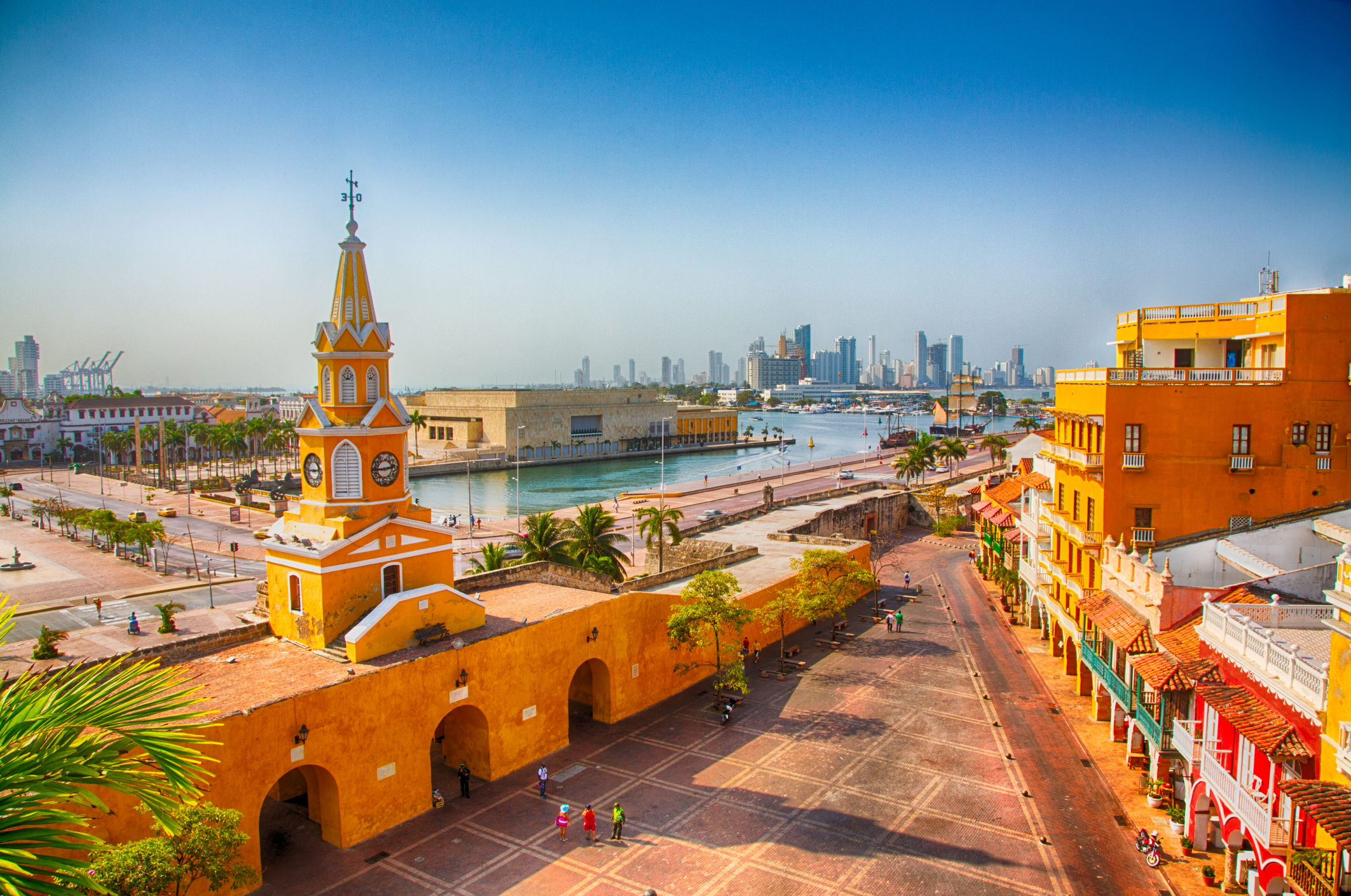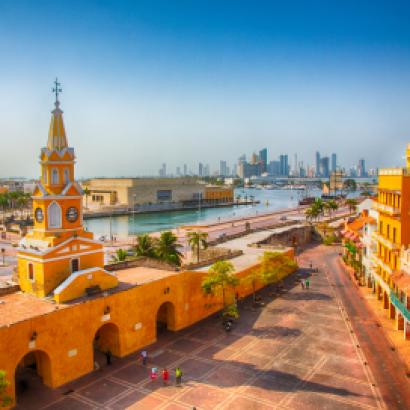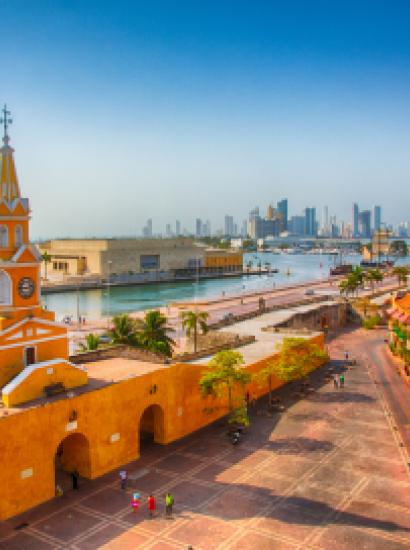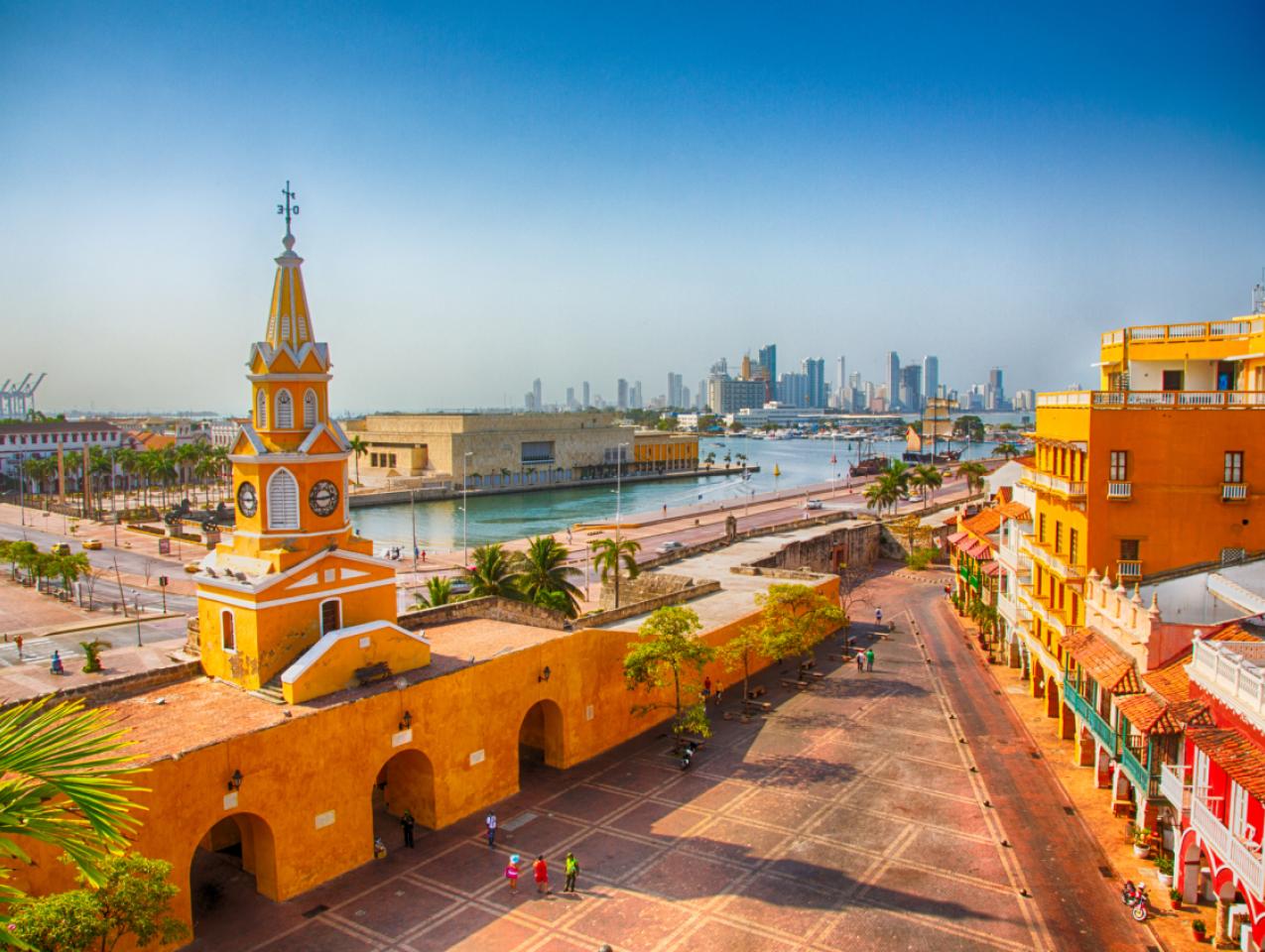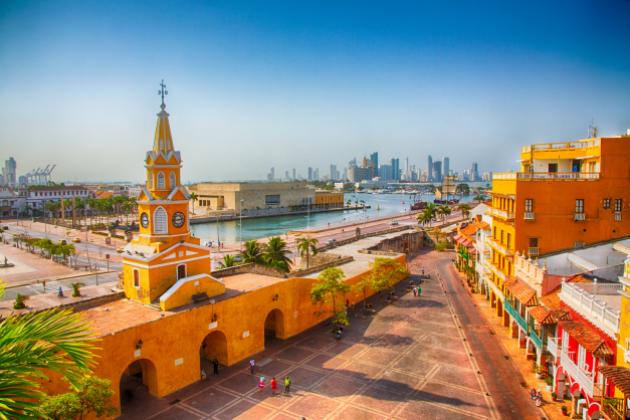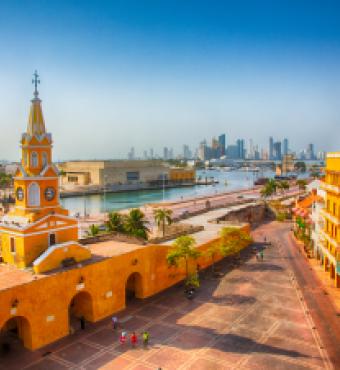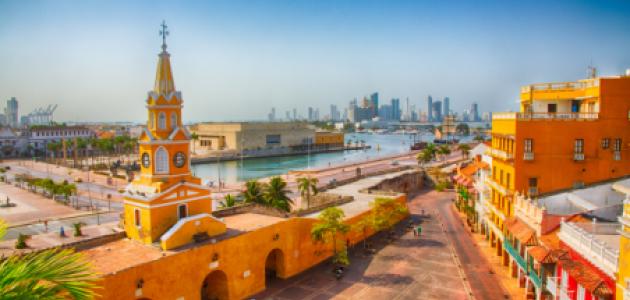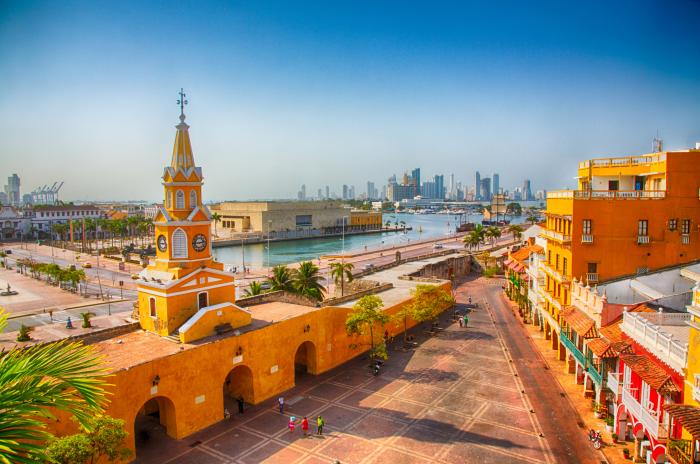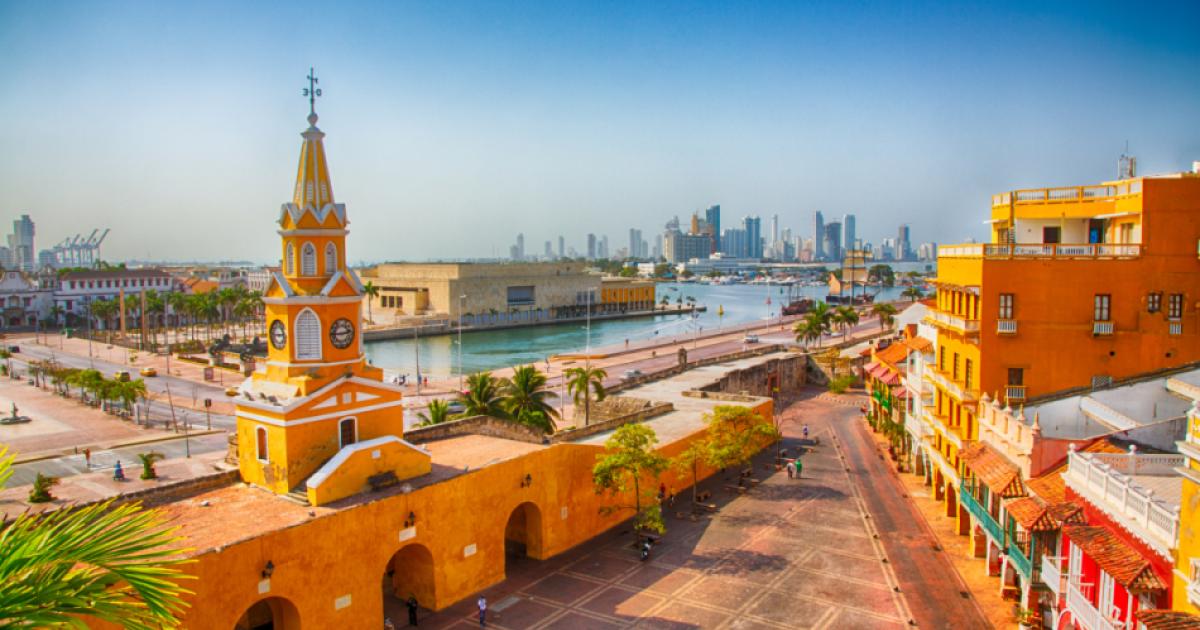- Energy & Environment
Our takeaway from our roundtable on Latin America in an emerging new world is a region showing gradual—and fragile—economic, social, and governance progress on average, but with significant heterogeneity lying beneath, both within and across individual countries. For example, while Mexican manufacturers are by some counts already more roboticized—and therefore more ready for future disruptions—than those in the United States, citizens in some areas of the country live with few opportunities in conditions more closely resembling sub-Saharan Africa. And while Chile, Uruguay, and Costa Rica can show a consistent trend of stability and growth with rising quality of life, next door, Brazil, once a developing-economy powerhouse, has fallen to below investment-grade and suffers rising drug violence. Colombia, post-peace agreement, has seen a historically remarkable economic and governance turnaround, while neighboring Venezuela's economy contracted by 18 percent last year, casting refugees across the continent. Something fragile is something which can breakdown easily or quickly. Even as we look to long-term forces which may shape the future of this region then, that persistent fragility looks set to define the region's day-to-day realities, country-by-country, and vote-by-vote.
Meanwhile, specific demographic pictures vary by country, but one consistent observation is that the future composition of each country's population (labor force, age, fertility) and ensuing migration pressures will not be like the past. These longer-term facts have not been a focus of governments in a region which has seen an average of 13 new constitutions written per country over the past two centuries.
Latin America has promise, and clear bright spots, but the status quo looks fraught given the changes that are already arriving across the region. In the near term, Latin America appears set to be a technology-taker, adapting externally-developed and managed platforms and systems to its local needs. There are risks to existing blue- and white-collar jobs, along with potential for transitioning citizens out of the informal sector. At the same time, the urbanization of Latin America (80% of the population lives in cities) would seem to facilitate further adoption of value-adding digital technologies into governance and everyday lives. We think this argues for a nuanced approach to 21st century technologies in the region.
In regions and sectors where existing institutions are generally strong or at last improving, gradual implementations into areas including digital governance, e-health, education, and manufacturing are likely to yield positive marginal dividends. Here, a rising middle class is demanding new attention and services that their governments have not traditionally been focused on offering. This is a fertile space for new technologies to take hold. Most recently, in Mexico and Brazil (together representing half the region's population), campaigning politicians have already seized upon social media and new communications platforms with surprising—even alarming—speed. Next, those same tools may also be applied to governance more broadly.
Meanwhile, where today's conditions and institutions are stubbornly poor, for example in the violence-torn Northern Triangle of Central America (NTCA), more innovative applications of new technologies may be able to circumvent institutional weaknesses to create "pockets of success" that improve the lives of everyday people. Digital networked platforms and the firms behind them could stand in for failing tax collectors, schools, even social trust systems. But even they demand a minimum of traditional social services and public infrastructure to help improve the region's productivity—it is difficult to run a business in a country where only one-third of the young finish high school and with just 2 meters of road per capita versus 20 meters in the United States.
The United States can help in some aspects of this transformation. And engaging in those areas where the United States can be effective shouldn't be seen as taking responsibility for another country's citizens, but in improving the "neighborhood" in a way that serves our own self-interest too. There are U.S. domestic implications to what happens in a fragile Latin America. But choices made in Mexico, Central America, and South America against this backdrop of technological change over the coming years also hold broader "great power" geopolitical implications, including growing Chinese economic and political interests, that have gone unappreciated in traditional U.S. narratives on the region. Things can change fast in this neighborhood. We need to pay attention.
Technology and Demographics in the "Fragile Democracies"
Ernesto Silva, in his survey of the region in this volume, points out that Latin American economies will grow on average by only 1.2 percent in 2018—faster if Venezuela is excluded—versus 3.7 percent worldwide. Despite low growth rates, however, social indicators show poverty levels have been reduced to below world average, and there is in many countries a growing middle class. Across the region, growth of the labor force is moderate, but generally well down from past growth rates, and will soon diminish further. In the key countries of Brazil, Colombia, and Chile, the labor force will begin to decline by 2035. With this comes a rapidly increasing population of older adults—by 2050, for example, Brazil's population will become "older" than that of the United States.
These trends point to a "demographic dividend" window that is still open, but rapidly closing. Can the region take advantage of that? Labor productivity remains stubbornly low. Public debt is growing and will likely continue to grow absent reforms to social security systems that will come under stress from an ageing populace. Alongside that, credit ratings are being reduced, increasing the cost of new infrastructure investment and doing business in general.
Given this, governments and institutions in the region will need to do more with less, especially in countries that have ridden the now-ending commodities boom. In countries with general stability and a rising middle class, citizens have new demands, and new frustrations. In Chile, the state, for example, is now expected not just to provide universal access to primary education but to improve the quality of secondary and college education too. Commenters at our roundtable pointed to the Brazilian middle class' (justified) dissatisfaction with their government's recent performance as the underlying driver of populist Jair Bolsonaro’s surprise election, which came on the back of 8.7 million Facebook followers and just 18 seconds of television time. Similar strains of malaise are evident in Mexico, where real incomes for college-educated workers have declined in recent years despite overall economic growth, and citizens are increasingly dissatisfied with corruption and violence.
What does technology hold for these relatively stable, if fragile, parts of Latin America, and how can the United States play a part?
Access to the internet is growing, and 56 percent of the region's inhabitants used the internet in 2016. But the pace of modernization of state and local government services and business innovation has been slow. We believe that information technology provides opportunities to increase growth and reduce dependency on commodity price cycles. It can reduce the cost and improve the quality of public services, and governments can be restructured to take advantage of these new technologies. Some options for how technologies might support a leap to close the gap with the rest of the world include:
- 50 percent of the population is not part of the banking system. New forms of money and digital payment platforms offer a significant opportunity.
- Urbanization provides opportunity for electronic commerce, increasing competition and improving quality, empowering customers, and boosting entrepreneurs.
- Electronic health technologies including telemedicine provide opportunity for significant leapfrog in health care in areas where infrastructure may be lagging, which is particularly important as populations age.
- Widespread internet and smartphone access provides a new backbone to expand and strengthen the quality of education. With low marginal costs, technology helps even remote and vulnerable people gain access to quality education, allowing them to compete in knowledge and skills and supporting life-long education and upgrade of skills. Latin America’s current poor performance in the quality of education leaves its citizens and enterprises ill-equipped for 21st century success.
- “Smart cities” can apply information and communication technologies to address congestion, pollution, efficiency of public services, ride sharing, and urban planning.
- Governments can simplify processes and improve quality of services; roundtable participants estimated that digitization can reduce per-person interaction costs by an order of magnitude and reduce corruption in the process.
- And citizens can be informed and participate in civic debate, leading to increased transparency and accountability.
There are risks too to these changes however—areas in which the United States could help mitigate the negative impacts of disruption:
- With digitization comes cyber intrusion, and many Latin American countries do not have experience with cybersecurity risks. This is an area where the United States has shared interest and can provide direct expertise, training, and best practices.
- Similarly, new technologies that permit the collection of large amounts of information on citizens by governments demand new cultural norms and systems for data privacy. This is a particularly important problem given rapid changes in governments—and even constitutions—in the region.
- Social media pose enormous new challenges for the political system, as citizens participate more actively in political and social life. Roundtable participants noted that whereas a robust political process requires discussion, debate, negotiation, and consensus, today's social networks can actually make this process more difficult by encouraging groups of like-minded individuals, that then listen largely to themselves, instead of developing an intermediated "common space."
- Finally, technological disruption more broadly rewards those who are most flexible, and the most able to harness and scale these tools. In a region that lags behind global averages in educational performance, this should be a wakeup call for faster development of human capital—if not to be at the forefront of developing a broad swath of 21st century technologies—to at least be able to understand, apply, control, and take advantage of them.
Technology and Demography in the "Non-Governed" America
Though Latin America is on the whole more democratic and politically freer than in the recent past, in many places today, the rule of law effectively does not operate at all. Instead they are controlled by guerillas, crime, and drug trafficking. The Northern Triangle of Central America (and parts of southern Mexico) stands out for its weak government, poor institutions, poor infrastructure, and high levels of violence. NTCA is particularly unprepared for the global forces that are coming, which absent deliberate and innovative efforts may make it even more difficult for the average citizen to generate income.
Today, two-thirds of the NTCA economy is informal, where workers earn just 35 to 90 percent of minimum wage (and generally pay no taxes). The formal economy, meanwhile, is dominated by medium and large businesses that are largely family-owned, risk averse, and operated to maintain the living standards of the owners rather than grow. Foreign direct investment suffers from poor risk-reward tradeoffs, limiting opportunities for commercial development and modernization.
Human capital is at low levels. Two-thirds of students never finish high school, and three-quarters of those who finish high school can’t pass a standardized math test. Less than 11 percent go to college. And for those who do, academia is not well-aligned to provide students the skills future industry will need.
Better policy and governance should be an obvious response to improving these poor conditions, but governments in the region are challenged by deep polarization, and they repeatedly fail to align stakeholders to support programs like housing, infrastructure, and education that are necessary to facilitate jobs in a digital economy. And with low tax revenues and collection rates, they have few resources to build these ecosystems even if the politics were to align.
Poor conditions, combined with poor institutions, has therefore increased the importance of "outsider" and non-governmental actors to daily lives in these least developed parts of the region. Pitifully, drug cartels to operate as part-roving, part-stationary "bandits," bent on extraction of wealth from the local population as a form of pseudo-governance until displaced by another gang. A new and far more positive phenomenon though is the spread of commercial mobile internet-based self-employment and income-generating "platforms" such as the more established Uber and Airbnb but also locally-developed mobile web-based micro-franchises. These technology platforms have started to take hold in NTCA offering jobs, but also "pockets of success" in people's everyday lives through:
- ratings-based social trust;
- accountably for fraud through corporate rather than government recourse;
- minimized opportunities for petty corruption or extortion in daily business activities;
- functional third-party customer service;
- automatic tax payments that change default social expectations for behavior;
- and even low-cost onboarding and targeted education of the platform workers themselves, particularly valuable in a region with very low levels of human capital.
One striking example shared at our roundtable is that women in Guatemala will take an Uber ride by themselves, but not a taxi ride. They appreciate the reviews and accountability of Uber, but generally do not feel safe enough, nor trust their government’s protection enough, to take a licensed taxi cab. While these tech-enabled self-employment platforms themselves cannot substitute for long-term good governance, they clearly can complement and even extend areas where governments are able to provide a modicum of stability and infrastructure. These platforms are in a sense technological analogues to traditional political economy "institutions." They offer a new and compelling answer to the question of how NTCA might jumpstart its way out of continuing cycles of poverty and violence—enabling average citizens to meet the needs of other citizens more productively.
In parallel with its indispensable efforts to promote governance and security in this region, the U.S. government and multilateral groups should therefore explore ways to support these burgeoning non-governmental institutions. One could imagine how tech-enabled platform or micro-franchises could increasingly address unmet needs: not just better bakeries, mini-stores, day care centers, electrical services, plumbing services, and so forth, but also traditionally government-mediated fields such as healthcare, banking, credit, insurance, education, clean water services, and trash collection. If proven in the difficult conditions of Central America, such approaches could be applied elsewhere in Latin America to improve jobs and stability.
Meanwhile, the U.S. government should continue encouraging targeted investment in this region, especially to help provide the basic infrastructure for business and commerce to function. It should encourage existing—and funded—development institutions such as the Inter-American Development Bank to take on loans or augment credit-worthiness in these most impoverished parts of the region rather than in the investment-grade Latin American countries that dominate its portfolio today. And where capital is put at risk in this region of poor institutions and track records, it should as a rule be done in public-private partnerships to improve accountability and quality of execution.
Finally, we have the question of violence, which has become so severe in NTCA as to reduce the overall life expectancy of men and act as a massive "tax" on economic activity of all kinds, and which periodically sets off large migrant outflows towards the United States. In addition to security apparatus funding and traditional rule of law efforts, roundtable attendees speculated if there is an opportunity for digital technologies to significantly improve the effectiveness of policing and the monitoring and reporting of crime:
- For example, one might imagine the application of syncretic "big data" platforms, such as those developed by U.S. tech firm Palantir and used (with some controversy) by municipal police departments to attempt to predict criminal activity—would such efforts, if effective, be better received in a region where the stakes are demonstrably higher?
- Similarly, for video monitoring facial recognition technologies. The Chinese government has arguably taken these too far in creating near-police states, but they have also been widely used to reduce interpersonal crime across similarly highly-urbanized UK and Europe and are seeing continuously improving costs and levels of effectiveness.
- India provides another model of a radical "fintech" policy—moving society towards purely digital (and therefore traceable) payments. The Indian public has seemingly accepted the losses in liberty associated with largely replacing cash transactions with this technological alternative as net-positive given heretofore intractable problems of corruption: could such a strategy similarly reduce street extortion in the NTCA or other regions of Latin America facing similar governance issues?
While crime in NTCA and other parts of Latin America has many drivers, roundtable participants emphasized one root cause where the United States has direct influence: drugs. Discussants noted that the largely supply-side focused U.S. "war on drugs" has, despite decades of efforts, failed to stem the availability and use of illicit drugs in the country. This creates a black market in which Latin American criminal cartels thrive, awash in money and arms. These repeated failures would seem to call for a radical rethinking of U.S. drug policy, including a focus on reducing the demand for drugs through selective decriminalization and aggressive treatment and education programs. Any success here over time would have hugely positive implications for the United States domestically as well as the functioning of the most marginal of Latin America societies.
Demographics, Migration, and Implications for the United States
Our roundtable discussion considered how these conditions and the future prospects for Central America and the less stable parts of Mexico might affect the pressure for out-migration to the United States. Discussants observed that such pressures are affected in the long term by essentially unchangeable demographic trends, but short-term variations in net migration between the United States, Mexico, and the NTCA remain dominated by changes in economics and violence.
Today, the population of Mexico is about 125 million, growing slowly (about 1.2 percent per year), and aging rapidly. The number of children under 15 is shrinking, and the number of seniors over 65 is growing: by 2050, there will be 110 seniors for every 100 children. Mexico has fallen to replacement level fertility; its workforce will grow by 25 percent through 2035 and essentially remain flat thereafter. Improved health and declining infant mortality have led to substantial increases in life expectancy, which now exceeds 80 in Mexico for both men and women. But as described above, homicide due to drug and gang-related violence is a major cause of death for young men; future gains in life expectancy will depend on how these countries deal with violence.
Moving south, the combined population of the NTCA is about 31 million. Guatemala is growing rapidly, El Salvador slowly. Fertility rate declines and workforce growth trends lag those already observed in Mexico by about 20 years. Over the next two decades, for example, the Guatemalan potential workforce will explode by 55 percent and expand by another 25 percent on top of that in the two decades that follow. Fertility in NTCA is higher in rural and indigenous areas, and with low education levels teenage parenthood remains surprisingly high. Were this to change, it could help increase women's participation in the labor force in NTCA, which remains low.
What does this mean for migration? 12.6 million people from Mexico live in the United States today, representing nearly one-third of the U.S. foreign-born population. Mexicans living abroad (the vast majority of them in the United Sates) now represent 10 percent of Mexico’s population. Ans another 3 million people from the NTCA live in the United States, representing 6 percent of the population of Guatemala, 6.5 percent for Honduras, and 22 percent for El Salvador.
Net migration from both areas to the United States was very high between 1995 and 2005, due both to turmoil in Central America and labor-driven migration from Mexico. This was followed, however, by a huge decline in emigration in 2005-2010, plus an increase in return migration from the United States (the result of the 2008-2009 "great recession" and increased immigration enforcement during the Obama administration).
Going forward, net emigration from Mexico is expected to be well below the historical average: about 50,000 per year to all countries of the world, including the United States, with a large component of that being formal, documented migration. In fact, Mexico today sees large numbers of returnees from the north, including children born in the United States.
Net migration from the NTCA countries, however, particularly from El Salvador, is expected to continue to be substantially greater, due in part to the climate of violence. The number of migrants from NTCA in transit through Mexico—very few of whom end up staying in Mexico, which has a miniscule foreign-born population of just 1 percent, similar to Japan—is now returning to its earlier peak reached just before the great recession. Most first-time migrants are between 15 and 29 years old, are more likely to come from urban areas, and have higher educational attainment than prior generations.
These changes in flow are prompting novel policy challenges. Though the concept may sound odd to U.S. sensibilities, the growing history and now bi-directional cross-border flows of U.S.-Mexican migrants has raised the issue of a "shared" population. The task of harnessing their social contributions and meeting their needs has largely fallen to local governments, who increasingly face questions of healthcare services, education, and labor productivity. Do federal governments in either country have a strategy for effective governance of these peoples going forward?
Meanwhile, increasing through-migration of NTCA asylum seekers in Mexico is changing attitudes there towards immigration as well. Once focused on U.S. treatment of Mexican migrants, Mexican politicians and citizens themselves are now wrestling with the idea that their country could also become a destination for migrants looking for opportunity or refuge. This speaks to an opportunity for U.S.-Mexico collaboration and coordination.
Technological Change and a Return to Great Power Influence?
One expected theme which emerged from our roundtable conversations was the matter of growing Chinese government and business interests across Latin America. In a region which is in the United States' "neighborhood," China has made significant inroads through strategic investments and government-to-government relations, while U.S. geopolitical attention has largely been turned elsewhere. China, for example, is already Brazil's, Chile's, and Peru's biggest trading partner. Troubled Chinese oil-for-loans deals with Venezuela are well-known, but China has also made billions of dollars in high profile "policy bank" infrastructure loans to Brazil, Argentina, and Ecuador, often without fiscal policy covenants attached. It is the region's largest creditor.
Changing technologies may open the door to deeper Chinese ties across the region. For example, Chinese mining firm Tianqi, likely funded by Chinese state-owned banks, has recently been cleared to purchase stakes in a Chilean lithium miner previously held by a Canadian firm—lithium being a crucial input of growing global importance for electric vehicles and other electronics, and traditionally considered a strategic resource for the Chilean state.
As our roundtable on China in an Emerging World explored, the country is very strong on mobile digital technologies and applications. And Latin America is likely to become an increasingly attractive market for this. Public security and digital surveillance technologies, for example, are one area of growing Chinese export interest which might find receptive customers in this violence-plagued region. Advanced digital communications networks are another. What are the tradeoffs of such investments, and does the United States have an interest in the choices made here?
Private Chinese internet businesses are also eager to expand in the developing world, seeing little opportunity to gain market share in the United States and Europe. Without robust homegrown alternatives, will Chinese firms come to dominate emerging consumer sectors such as mobile digital payments? This is an area with potentially strategic data gathering implications (private Chinese internet firms regularly share user data with the government when compelled), no clear local governmental or institutional strategy, and U.S. and European tech firms have relatively little to offer. The United States should consider how it might work with governments and commercial partners in the region, such as existing banks, on principals for the development of such mobile payment systems—and which are often linked to broader digital governance national ID schemes on top of which private firms can offer their own goods and services.
One of our authors in this volume observed a historical predilection across Latin America for caudillos—political strong men—who profess to offer "magical" solutions to entrenched problems. They represent a triumph of the individual personality over political institutions, aligning philosophically with Chinese political and social tendency towards "men" over "law." Our roundtable and the paper in this volume demonstrate the numerous reasons for which the United States and democratic U.S. institutions should be interested in this region—and the ways in which it might go about realizing those interest given a changing world. At the same time, we also observe that even in the past, U.S. attention towards Latin America often peaked when it felt that its dealings with Latin America played into broader "great power" rivalries. Since the fall of the Soviet Union and the dominance of Pax Americana in diffusing such concerns, U.S. attitudes towards this region could be characterized as a sort of benign neglect, inflamed again periodically only at its own southern border. In this emerging new world, perhaps a return to great power relations gives a new—and ultimately beneficial—reason for constructive U.S.-Latin American engagement once more.
Emerging, From Where?
Our roundtable at the Hoover Institution was moderated by the Honorable Pedro Aspe, who has long participated in and observed Latin American governance through a variety of administration roles including as Mexican minister of finance and through involvement in a broad swath international fora and investments. And through our discussions, Aspe remarked that as we consider the longer-term transformations described here, it is also important to understand the fragile and rapidly-changing Latin American political landscape from which those forces are emerging. Indeed, the December 2018 roundtable coincided with some of the most relevant political events that have taken place in some of the largest economies of Latin America in decades: namely, Brazil, Mexico, and Venezuela. Each of those changing foundations deserves mention here.
Starting with Brazil, the largest economy in Latin America, the recent election of Jair Bolsonaro as president signals a right-winged populist regime change that is highly nationalistic and prone to push for economic reform. It is important to understand Bolsonaro’s position regarding free trade and his position regarding the apparent opposition between labor protection and technification of production processes. Appointments like that of "Chicago school" economist Paulo Guedes as minister of finance are a positive signal that he wants to open the Brazilian economy, much as Mexico did successfully to encourage new investment in the 1990s. Going forward, we should pay close attention to his economic reform proposals and how they fit into a free trade world. In theory, Bolsonaro’s reforms can be enacted, while in practice their implementation may be more complex given the nationalistic campaign promises he made on the road to the presidency.
Then we have Mexico, the second largest economy in the region. The recent election of Andrés Manuel López Obrador (“AMLO”) as president, a left-winged populist with an isolationist background, will very likely result in relevant changes to the country’s economic policy. It will be of great importance to see how his proposed economic policies are implemented in a country that has experienced a considerable growth of its middle class in the past two decades, most of it linked to a boom in manufacturing driven by free trade agreements in general, and specifically by NAFTA. It is relevant to mention that one of the first things AMLO did after winning the presidential election was to back the renegotiation of NAFTA into the recently agreed USMCA regional trade agreement. He has also been in favor of the CPTPP (a successor to the negotiated Trans-Pacific Partnership, which U.S. president Donald Trump declined to sign in 2017). CPTPP goes even further than the USMCA and the traditional concept of “free trade,” as it also pushes for the modernization of areas of the economy, such as digital products and intellectual property, while heavily limiting the role state-owned enterprises can play. Thus, it will be interesting to see how this apparent support for free trade in general interacts with his isolationist, entitlement-heavy and government-centric economic policies—which echo those practiced by the PRI in the 1960s. As in the case of Brazil, we have to better understand AMLO’s stand regarding the apparent opposition between labor protection and the further automation and technological-orientation of production processes.
Finally, we have Venezuela, a country that continues to suffer one of the most dramatic economic deteriorations in recent history in Latin America. The start of a second term of Nicolás Maduro as president has divided Venezuela’s society in two: the ones that consider him as the legitimate president and those who consider his election invalid such that a different president should be elected. The international community, including the United States, has weighted heavily in recent months, mainly in favor of having new democratic elections in the country, and not recognizing Maduro as the legitimate president. This may be the opportunity to have a regime change in a country that 30 years ago could be considered as one of the most solid economies of the region. A regime change in Venezuela would considerably change the country’s labor and economic prospects, although any improvement is sure to take some time to be observed given the relatively high level of deterioration its economy currently has.
Collectively, these changes underscore the degree to which waves of public and political sentiment can gather strength and quickly wash—or crash—through society in this region. We look to an emerging Latin America, the demographics and twenty-first century technologies that will shape both it and its global partners, and how to best prepare and respond to that. But the experience of our moderator also reminds us that in doing so we should anticipate that ever-shifting regional political realties will ultimately underpin, or break down, that fragile capacity for governance.







